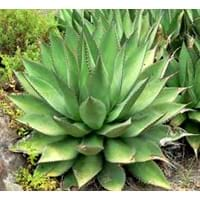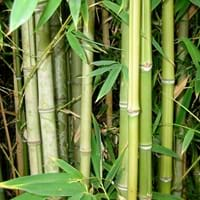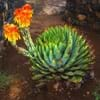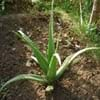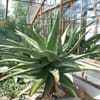Life Span
Perennial
Perennial
Type
Cactus or Succulent
Grass
Origin
Western United States, Southwestern United States, Latin America and the Caribbean, Caribbean, Central America, South America
China, Japan
Types
Agave americana
Agave angustifolia
Agave shawii
Greenstripe Vivax, Moso, Weavers Bamboo, Oldhamii
Habitat
Desert, Hardwood forests, Hillside, Humid climates, Rocky Ridges, wastelands
Warmer regions
USDA Hardiness Zone
Not Available
6-9
AHS Heat Zone
Not Available
Not Available
Sunset Zone
Not Available
Not Available
Habit
Not Available
Clump-Forming
Minimum Height
Not Available
Flower Color
Not Available
Not Available
Flower Color Modifier
Not Available
Not Available
Fruit Color
Brown
Green, Pink, Red
Leaf Color in Spring
Not Available
Dark Green
Leaf Color in Summer
Not Available
Dark Green
Leaf Color in Fall
Not Available
Dark Green
Leaf Color in Winter
Not Available
Dark Green
Leaf Shape
Long linear and narrow
Long Linear
Plant Season
Spring, Summer, Fall, Winter
Not Available
Sunlight
Full Sun
Full Sun, Partial Sun, Partial shade
Growth Rate
Slow
Very Fast
Type of Soil
Not Available
Loam
The pH of Soil
Not Available
Acidic, Neutral, Alkaline
Soil Drainage
Well drained
Average
Bloom Time
Not Available
Not Available
Tolerances
Not Available
Wet Site, Drought
Where to Plant?
Ground, Pot
Container, Ground
How to Plant?
Seedlings
Grafting, Seedlings, Stem Planting, Transplanting
Plant Maintenance
Medium
Medium
Watering Requirements
Does not require lot of watering
Needs watering once a week, Use Mulches to help prevent water loss during hot and windy weather, Water Deeply
In Summer
Lots of watering
Lots of watering
In Spring
Moderate
Moderate
In Winter
Average Water
Average Water
Soil pH
Not Available
Acidic, Neutral, Alkaline
Soil Type
Not Available
Loam
Soil Drainage Capacity
Well drained
Average
Sun Exposure
Full Sun
Full Sun, Partial Sun, Partial shade
Pruning
Remove deadheads, Requires little pruning
Do not prune during shooting season, Prune in late summer or fall, Remove damaged leaves
Fertilizers
All-Purpose Liquid Fertilizer
All-Purpose Liquid Fertilizer
Pests and Diseases
Red blotch
Black sooty mold, Mealybugs, Mosaic viruses, Powdery mildew, pythogens, Stem rot
Plant Tolerance
Drought
Drought
Flower Petal Number
Single
Not Available
Showy Fruit
Not Available
No
Edible Fruit
Not Available
No
Fragrant Flower
Not Available
No
Fragrant Fruit
Not Available
No
Fragrant Leaf
Not Available
No
Fragrant Bark/Stem
Not Available
No
Showy Bark
Not Available
No
Foliage Texture
Bold
Coarse
Foliage Sheen
Not Available
Matte
Invasive
Not Available
Yes
Self-Sowing
Not Available
No
Attracts
Not Available
Not Available
Allergy
Not Available
Cyanide poisoning
Aesthetic Uses
Showy Purposes
Showy Purposes
Beauty Benefits
Not Available
Not Available
Environmental Uses
Air purification
Air purification
Medicinal Uses
constipation, Gastrointestinal disorders
Clears heat, Cold, fidgeting, Treating fever, Urinary tract problems
Part of Plant Used
Leaves, Sap, Seeds, Stem
Leaves, Stem
Other Uses
Pulp can be used to make rope place mats and other goods, Used in making beverages
Application in Handicrafts, Showy Purposes, Used As Food, Used in Furniture, Used in paper industry
Used As Indoor Plant
No
Yes
Used As Outdoor Plant
Yes
Yes
Garden Design
Container, Feature Plant, Foundation, Houseplant, Rock Garden, Wall
Hedges, Mixed Border
Botanical Name
AGAVE
BAMBUSA
Common Name
Century plant
Bamboo, Clumping Bamboo
In Portuguese
Agave
bambu
Phylum
Not Available
Magnoliophyta
Class
Liliopsida
Liliopsida
Clade
Monocots
Not Available
Tribe
Not Available
Bambuseae
Subfamily
Agavoideae
Arthrostylidiinae, Arundinariinae, Bambusinae, Chusqueinae, Guaduinae, Melocanninae, Nastinae, Racemobambodinae, Shibataeinae
Difference Between Agave and Bamboo
If you are confused whether Agave or Bamboo are same, here are some features about those plants to help you choose better. Many people think that these two plants have the same characteristics, but one can see Agave and Bamboo Information and learn more about it. Fertilizers required for proper growth of Agave are All-Purpose Liquid Fertilizer, whereas for Bamboo fertilizers required are All-Purpose Liquid Fertilizer. Hence, one should know the basic difference between Agave and Bamboo if you are planning to have them in your garden to enhance its beauty.
<
Flowering PlantsImportance of Agave and Bamboo
Want to have the most appropriate plant for your garden? You might want to know the importance of Agave and Bamboo. Basically, these two plants vary in many aspects. Compare Agave and Bamboo as they differ in many characteristics such as their life, care, benefits, facts, etc. Every gardener must at least have the slightest clue about the plants he wants to plant in his garden. Compare their benefits, which differ in many ways like facts and uses. The medicinal use of Agave is constipation and Gastrointestinal disorders whereas of Bamboo is Clears heat, Cold, fidgeting, Treating fever and Urinary tract problems. Agave has beauty benefits as follows: Not Available while Bamboo has beauty benefits as follows: Not Available.
Compare Facts of Agave vs Bamboo
How to choose the best garden plant for your garden depending upon its facts? Here garden plant comparison will help you to solve this query. Compare the facts of Agave vs Bamboo and know which one to choose. As garden plants have benefits and other uses, allergy is also a major drawback of plants for some people. Allergic reactions of Agave are Not Available whereas of Bamboo have Cyanide poisoning respectively. Having a fruit bearing plant in your garden can be a plus point of your garden. Agave has no showy fruits and Bamboo has no showy fruits. Also Agave is not flowering and Bamboo is not flowering . You can compare Agave and Bamboo facts and facts of other plants too.
